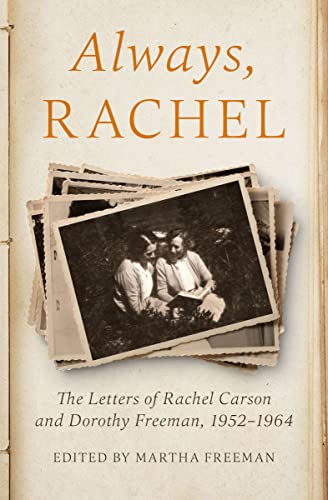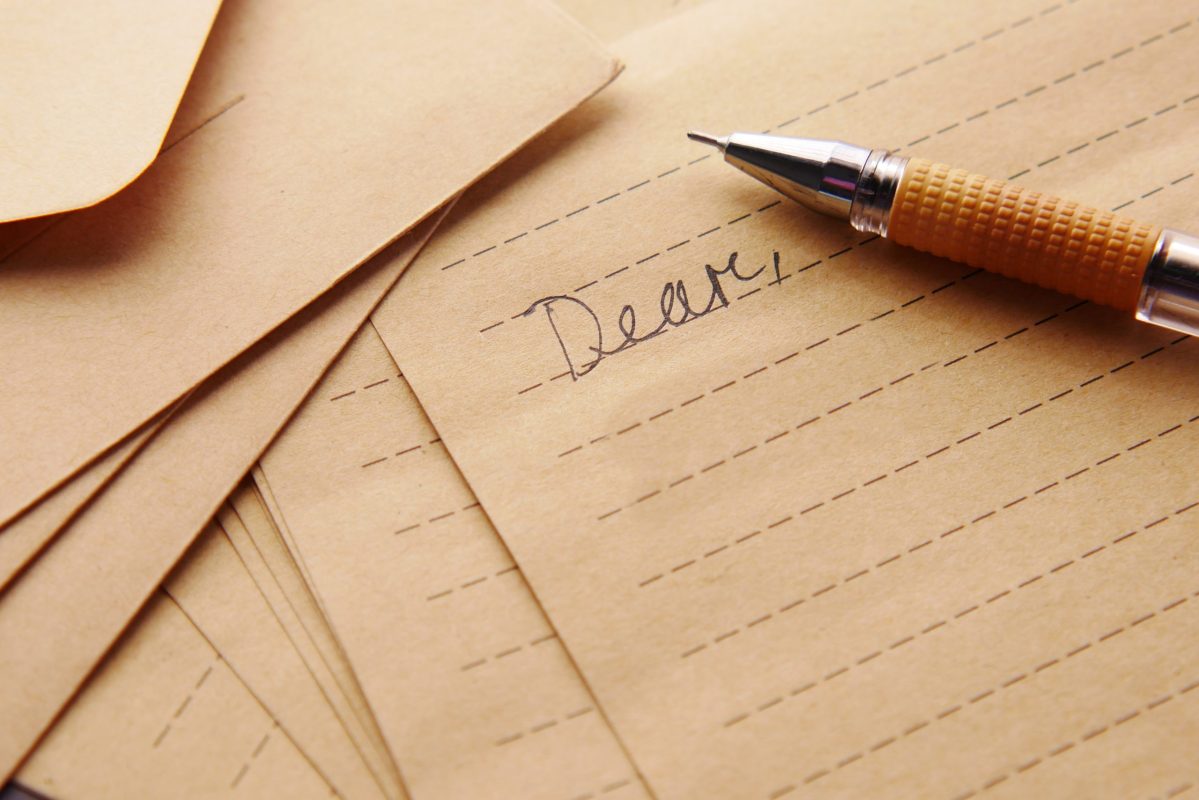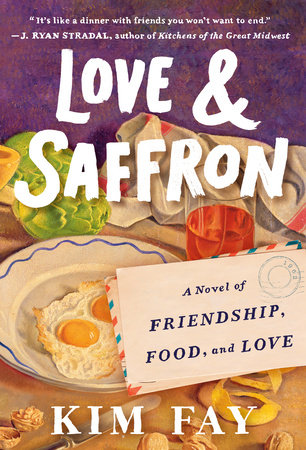In 1995, I left the Elliott Bay Book Company in Seattle to teach English in Vietnam. Around that time, my friend and fellow bookseller Janet Brown traveled to Thailand to teach as well. There was no email then, and overseas phone calls were a luxury. So we wrote to one another, meditating on the countries we lived in, the books we read, the books we wrote, and the people we fell in and out of love with.
Four years later I moved to L.A. and Janet moved back and forth between Seattle, Thailand, and China. Rarely were we in the same city at the same time, let alone the same country, but through our devoted missives, we created a shared spiritual plane. When I wrote my epistolary novel, Love & Saffron, we had been corresponding for 25 years. In the story, one character writes to the other: “When a new experience comes into my life, it doesn’t feel real anymore unless I’ve shared it with you.” This is Janet and me.
We owe our bone-deep kinship to our correspondence. I am certain this is why collections of letters between friends are my favorite. I chose these in particular because each one captures a unique way in which letters can establish profound and unbreakable bonds.
As Always, Julia: The Letters of Julia Child and Avis DeVoto edited by Joan Reardon
There is plenty of food in these letters, of course! For that it’s worth the price of admission. But what I love most about the exchanges between Julia Child and Avis DeVoto is the way they crafted a rich friendship before they ever met. When Child writes to DeVoto’s husband in 1952 about his article in Harper’s criticizing American stainless steel knives, DeVoto is the one who responds, and in the first letters, it’s clear the two women have an instant rapport. They are unselfconsciously funny. They aren’t afraid to be affectionate with one another. And because of the timing, DeVoto becomes crucial to the success of Child’s Mastering the Art of French Cooking.
Sister Love: The Letters of Audre Lorde and Pat Parker 1974-1989 edited by Julie R. Enszer
Audre Lorde and Pat Parker were Black, lesbian, feminist poets, giving this collection significance in a historical context. But what moves me is the way they constantly encouraged one another. They were both striving as artists and activists, struggling to claim space for themselves, but they never competed with one another. In exchanges about race, politics, motherhood, and cancer, all framed by their writing lives, their mutual trust is unequivocal. When Parker wants to quit her safe job to write full time, Lorde replies: “I support you with my whole heart and extend myself to you in whatever way I can.” To me, this captures friendship in its truest form.

Between Friends: The Correspondence of Hannah Arendt and Mary McCarthy, 1949-1975 edited by Carol Brightman
Granted, I first heard Hannah Arendt’s name in the wonderfully subversive Party Girl starring Parker Posey. But does it matter how we come to read someone, just so long as we do read them? An admirer of Arendt’s The Origins of Totalitarianism and Mary McCarthy’s Vietnam, I find their correspondence fascinating. Their letters illustrate why they were two of the most important (and controversial) thinkers of their time. They are also a reminder that even the most formidable of people need close friends—that person they can discuss everything honestly with, from the dissolution of a marriage to the definition of Truth with a capital T.
The Letters of Denise Levertov and William Carlos Williams edited by Christopher Macgowan
Denise Levertov used to come into the bookstore where I worked to chat with one of my co-workers. I was envious. I wanted to have conversations with this serious, surprisingly playful poet. The next best thing was the publication of this book, which begins with the young Levertov’s fan letter to literary great William Carlo Williams. Throughout the 1950s into the early 1960s, the two poets became friends on equal footing. While they share details of their personal lives, their letters sing when they discuss poems; threaded through their correspondence is a master class on writing poetry.
The Delicacy and Strength of Lace by Leslie Marmon Silko & James Wright
I remember first picking up this book because of its physical beauty. A slim objet d’art. I just wanted to hold it. Then I read it and understood what a treasure it truly is. It is yet another correspondence begun by one artist admiring another—in this case James Wright moved to tell Leslie Marmon Silko how her debut novel Ceremony made his life more meaningful. Over the course of 18 months, until Wright’s death from cancer, the two open their hearts to one another with evocative, and often breathtaking, depictions of their lives.

Always, Rachel: The Letters of Rachel Carson and Dorothy Freeman, 1952–1964 edited by Martha Freeman
My admiration for Rachel Carson began not with her classic Silent Spring, but with her earlier nature writing about the sea. Her scientific prose as fluid as poetry made me want to know more about her, and I read these letters eagerly. They reveal the genuine love Carson had for the natural world, as well as the tenderness of her heart. She and Dorothy Freeman became summer neighbors in Maine in the early 1950s. During their seasons apart, they wrote to one another often. Their romantic tone has caused endless attempts to define their relationship, but I feel what’s important is the authentic beauty and strength of their bond, which for the two of them was the meaning of life itself.
A Different Distance by Marilyn Hacker & Karthika Naïr
Written during the first year of the pandemic, this exquisite book is an exchange between two poet friends both living in Paris but unable to visit one another. Using the renga form in which the first line of each new poem takes a word from the last line of the previous poem, Marilyn Hacker and Karthika Naïr sent poems back and forth, distilling those early Covid days. Hacker wrote of phone calls and texts that replaced “wine-flavored exchanges in the public privacy of a café,” and Naïr, going through cancer treatment, managed to discover that “something steelier than hope lights the heart once more.” Of the many books written during and about the pandemic, this deserves to be a classic.
84, Charing Cross Road by Helene Hanff
I don’t care that this collection shows up on nearly every epistolary book list. It is a sublime example of how letters can grow a friendship. New Yorker Helene Hanff wrote to Marks & Co. booksellers in London in search of an obscure book. As she and the shop’s chief buyer, Frank Doel, corresponded, their messages about books blossomed into a friendship both tender and fierce, as well as a study on everything from post-WWII rationing in England to the Brooklyn Dodgers. Hanff is especially appealing with her gruff sense of humor and no-nonsense—and occasionally vicious—love of books. Great gaps of time prove (at least to me) why letters make such satisfying reading. They always leave room for the reader’s imagination to play a role in the relationship as it unfolds.

